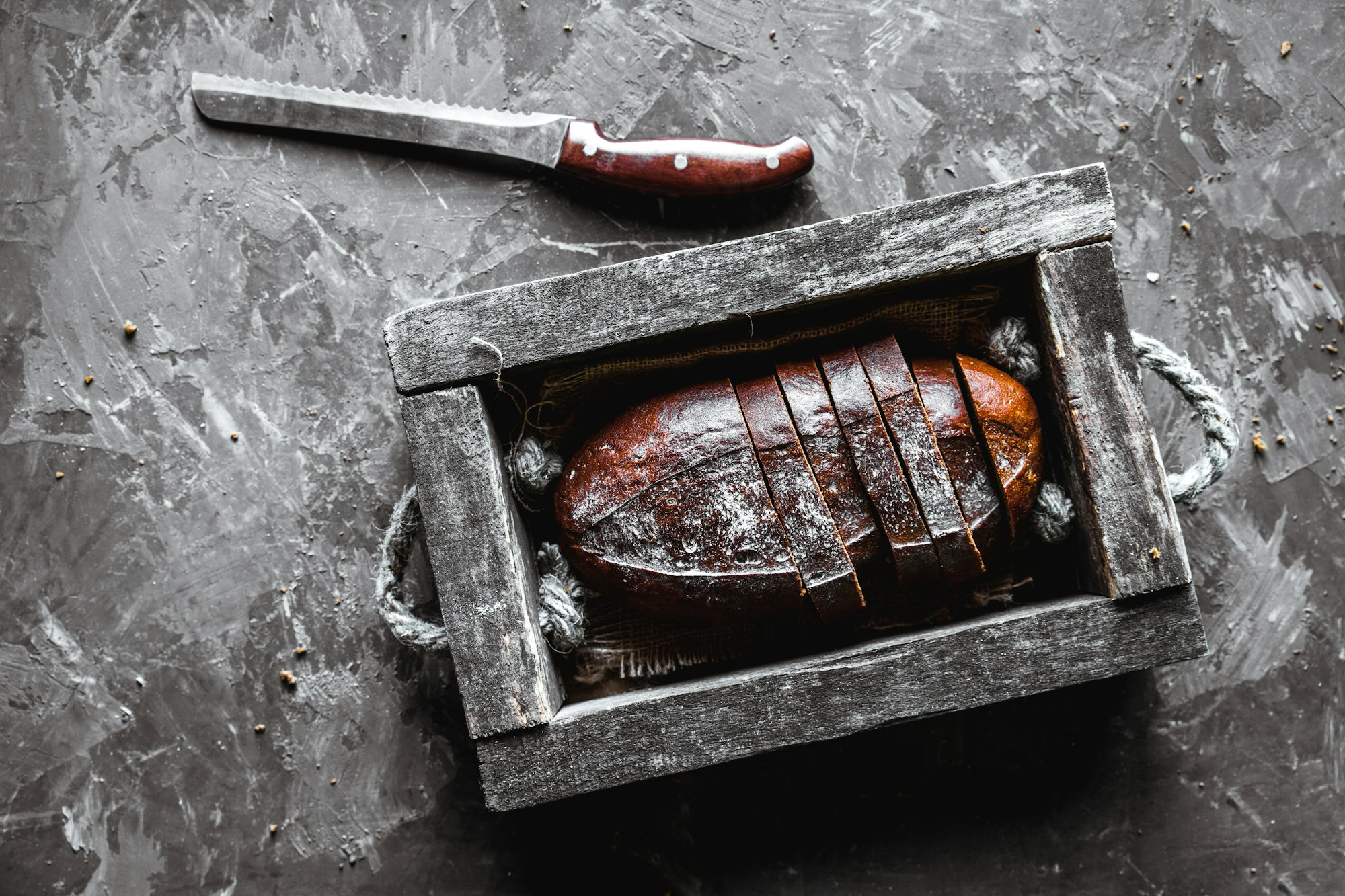How to Bake a Flawless Traditional Irish Soda Bread with Buttermilk?

Traditional Irish soda bread is a staple in many households, both in Ireland and beyond. It’s a simple, quick bread that relies on baking soda for leavening, rather than yeast. Slightly sweet and hearty, with a crusty exterior and a soft, crumbly interior, it’s a perfect accompaniment to any meal. In this article, we will walk you through the process of making this traditional bread, highlighting the key ingredients and techniques that will ensure a flawless loaf every time.
The Charm of Traditional Irish Soda Bread
When you think of traditional Irish cuisine, soda bread often comes to mind. This simple yet hearty bread has been a staple in Irish homes for generations, making it a beloved part of their culinary heritage.
A lire également : What’s the Secret to Perfectly Crispy Fried Green Tomatoes with Remoulade?
Soda bread is unique, owing to the use of baking soda as a leavening agent, as opposed to the more commonly used yeast. The critical reaction occurs when the acidic buttermilk interacts with the baking soda, producing carbon dioxide gas. This gas creates pockets in the dough, leading to the characteristically dense yet tender crumb of this bread.
With only a handful of ingredients – flour, baking soda, salt, and buttermilk – and a baking time of under 45 minutes, this bread is straightforward and quick to make. No need for kneading or waiting for the dough to rise. It’s traditional, it’s delicious, and it’s easy.
A lire également : What’s the Key to a Delicious and Hearty Minestrone Soup with Fresh Vegetables?
The Role of Key Ingredients in Traditional Irish Soda Bread
When baking soda bread, the ingredients you use can have a significant impact on the final loaf’s taste and texture.
First and foremost, the flour. Traditionally, Irish soda bread was made with a soft wheat flour, which has a lower protein content than the hard wheat flour commonly used in bread baking. This results in a tender crumb and a slightly sweet flavor. If you can’t find soft wheat flour, a good substitute is regular all-purpose flour.
The next essential ingredient, buttermilk, adds a tangy flavor and reacts with the baking soda to help the bread rise. It also helps to tenderize the gluten in the flour, resulting in a softer loaf. If you don’t have buttermilk on hand, you can make your own by adding a tablespoon of lemon juice or vinegar to a cup of milk and letting it sit for a few minutes.
Baking soda, the leavening agent, is what gives the bread its unique texture and slightly tangy flavor. It’s essential to use fresh baking soda to ensure your bread rises correctly.
Salt, the final ingredient, enhances the other flavors in the bread and helps to control the rate at which the bread rises.
Detailed Steps for Baking Traditional Irish Soda Bread with Buttermilk
Now that we’ve discussed the role of each ingredient, let’s dive into the step-by-step process of making this simple, yet delicious bread.
Start by preheating your oven to 425°F (220°C) and lightly greasing a baking sheet.
In a large bowl, mix together four cups of flour, one teaspoon of baking soda, and one teaspoon of salt. Next, make a well in the center of the flour mixture and pour in one and a half cups of buttermilk. Using a spoon or your hands, mix the ingredients together until a sticky dough forms.
Turn the dough out onto a lightly floured surface and knead it gently for about 30 seconds, just until it comes together into a smooth ball. Be careful not to overwork the dough, as this can make the bread tough.
Shape the dough into a round loaf and place it on your prepared baking sheet. With a sharp knife, cut a cross into the top of the loaf, about half an inch deep. This traditional "cross" helps the heat penetrate into the thickest part of the bread and allows the bread to expand as it bakes.
Bake the bread in your preheated oven for about 30-35 minutes, or until it’s golden brown and sounds hollow when tapped on the bottom. Let the bread cool on a wire rack before slicing and serving.
Additional Tips and Variations for Your Irish Soda Bread
While the classic recipe for Irish soda bread is delicious on its own, there are many variations you can try to customize the loaf to your liking.
If you prefer a sweeter bread, consider adding a few tablespoons of sugar to your dough, and maybe even some raisins. To create a savory loaf, you could add some grated cheese or herbs like rosemary or thyme. Some people even like to add stout beer to their dough for a deeper flavor.
Finally, remember that practice makes perfect. Baking is as much an art as it is a science, and it may take a few tries to get your bread just right. But don’t be discouraged. Keep baking, keep experimenting, and soon, you’ll have a flawless loaf of traditional Irish soda bread that will make any day feel a bit more Irish.
A Traditional St. Patrick’s Day Feature: Irish Soda Bread
St. Patrick’s Day is often associated with lively parades, green attire, and traditional Irish foods. What better way to honor the Irish heritage than by baking a traditional Irish soda bread? Not only is soda bread a staple in Irish households, but it is also a popular feature in St. Patrick’s Day festivities worldwide.
Let’s start with the historical significance of this quick bread. During the 19th century, when Ireland was facing economic hardships, households needed a cheap and straightforward bread recipe. As a result, Irish soda bread was born. The bread’s simplicity, coupled with its distinctive taste and texture, quickly made it a staple in Irish homes.
The food tradition of soda bread has stood the test of time, becoming an integral part of Irish culinary culture. Today, it’s not uncommon to find this bread served in homes and restaurants alike, especially during the St. Patrick’s Day celebrations. With its golden brown crust and dense, moist interior, a slice of this bread paired with a hearty stew or slathered in butter can transport you straight to the Emerald Isle.
Many people choose to bake their own soda bread on St. Patrick’s Day as a way of celebrating the Irish culture and heritage. It’s a ritual that’s as enriching as it is delicious. Plus, the aroma of freshly baked bread filling your kitchen is an added bonus.
Conclusion: Choosing a Cast Iron Skillet for Your Irish Soda Bread
Baking soda bread in a cast iron skillet instead of a baking sheet can enhance your baking experience and the final bread’s quality. A cast iron skillet gives you a well-browned, crispy exterior while keeping the interior moist and tender.
To bake soda bread in a cast iron skillet, preheat your skillet in the oven before adding the dough. This preheating step creates a beautiful, crusty bottom that’s a much-loved feature of soda bread. After adding the dough, you can proceed with the baking as per the recipe.
Moreover, using a cast iron skillet can make your baking process more authentic. Historically, soda bread was baked over an open fire in a pot or a griddle. While our modern ovens make the process more convenient, baking in a cast iron skillet offers a nostalgic nod to the bread’s rustic roots.
In conclusion, baking a traditional Irish soda bread with buttermilk is a skill worth learning. Whether you’re an experienced home baker or a novice, this bread recipe is something you can effortlessly whip up. Its simplicity, combined with its rich cultural heritage, makes it more than just bread. It’s a slice of history and tradition that you can enjoy any time, but especially on St. Patrick’s Day. So preheat your oven, gather your ingredients, and get ready to bake a loaf of delicious, hearty Irish soda bread.
